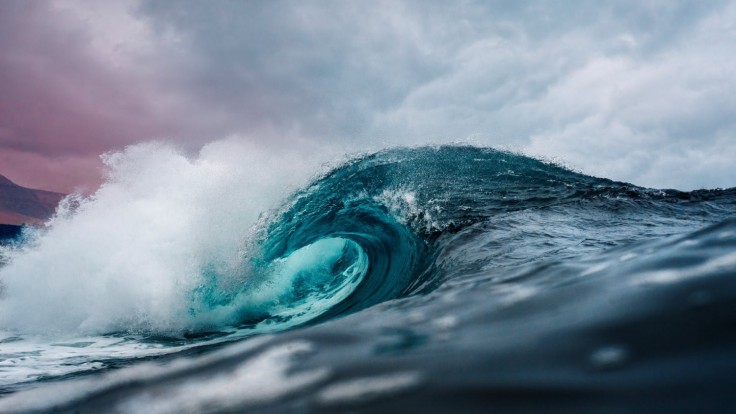Groundbreaking Video Captures Whale Bubble-net Feeding in University of Hawaii Research
By
Link to video and sound (details below): https://bit.ly/337g8oa
WHAT: University of Hawai'i at Mānoa's Marine Mammal Research Program (MMRP) researchers and key collaborators captured amazing whale's-point-of-view and aerial drone video of humpback whale bubble-net feeding. It's one component of a project investigating causes of a possible decline in humpback whale numbers
HOW: They used suction-cup tags fitted with cameras and sensors to gain an understanding of how humpback whales feed and how some whales use bubbles to optimize their consumption of prey by creating bubble nets. The tag data (video and accelerometer data) coupled with the drone data, is providing novel insights into the fine-scale details of how the whales carry out this behavior and how often they do this to sustain and gain enough energy and weight before they migrate back down to Hawai'i to breed and mate.
WHO: Lars Bejder, director of the UH Mānoa Marine Mammal Research Program (MMRP), UH Mānoa PhD student Martin van Aswegen and key collaborator Andy Szabo, Alaska Whale Foundation director, working with PhD student Will Gough and other members of Stanford University's Goldbogen Lab and the Bio-telemetry and Behavioral Ecology Lab at the University of California, Santa Cruz
WHERE: Waters off of Southeast Alaska
WHY: The bubble-net observations and data collection are part of a larger project investigating causes of a possible decline in humpback whale numbers, including shifts in habitat use and changes to food availability linked to prey depletion and climate change.
OTHER FACTS:
About 3,000 humpback whales visit Alaska during the summer feeding period, and up to 10,000 visit Hawai'i during the winter breeding period. When the whales leave their foraging grounds and migrate 3,000 miles, they stop eating until their return several months later.
The MMRP's bubble-net research is helping scientists to understand how humpback whales feed, how often they need to feed, what they feed on and how fast their bodies change or grow.
Other MMRP collaborators include The Pacific Whale Foundation, Hawai'i Institute for Marine Biology Researcher Kristi West and UH Hilo Professor Adam Pack.
Keep up to date through the MMRP website and social media platforms (Twitter and Instagram: MMRP_UH, Facebook: MMRPUH, Youtube: MMRP UH) to build awareness. To help achieve its mission, the program is also accepting donations to fund research initiatives and student scholarships. All donations are tax-exempt.
VIDEO:
(NOTE: "Permit Number: NOAA #1970" MUST be on screen at least :05 seconds during use of any whale video below AND must be included in any photo captions)
BROLL: (2 minutes):
0:00-0:53, 5 clips: aerial drone and whales-point-of-view of whale bubble-net feeding
0:53-1:07: sequenced clips of drone and whales-point-of-view bubble-net feeding
1:07-1:15: aerial view of whale emerging from the bubble net
1:15-1:21: drone in the sky
1:21-1:36, 2 clips: tagging humpback whales
1:36-1:50, 2 clips: whales
1:50-2:00: list of collaborators and permit number
SOUND:
Lars Bejder, Director, UH Mānoa Marine Mammal Research Program (15 seconds)
"The footage is rather groundbreaking. We're observing how these animals are manipulating their prey and preparing the prey for capture. So it is allowing us to gain new insights that really haven't been able to do before."
Bejder (23 seconds)
"So basically we have two angles and the drone's perspective is showing us these bubble nets if you will and how the bubbles are starting to come to the surface and how the animals come up through the bubble net as they surface, while the cameras on the whales are telling us from the animal's perspective, so overlaying these two data sets is quite exciting."
Bejder (15 seconds)
"In Hawai'i it's a breeding and resting ground. When they get up to Alaska it's a foraging ground, and we're trying to understand what that whole migration costs these animals and also how much prey these animals have to consume to maintain this whole migration."
Collaborators:
Marine Mammal Research Program (MMRP), University of Hawai'i at Mānoa
Alaska Whale Foundation
Goldbogen Lab, Stanford University
Bio-telemetry and Behavioral Ecology Lab, University of California, Santa Cruz
Pacific Whale Foundation
UH Collaborators: Professor Adam Pack, Kristi West
"Permit Number: NOAA #19703" MUST appear for at least :05 seconds on any video of whales used and must be included in any photo captions.
© 2025 University Herald, All rights reserved. Do not reproduce without permission.








